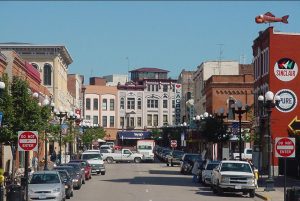Introduction to Community Planning
What is Community Planning?
 Through community planning, local governments work collaboratively with residents and stakeholders to articulate how they want their communities to look, feel and function in the future. Planning helps us to answer questions such as: Where and how do we build new homes, schools, businesses, roads and public infrastructure? How do we deal with parts of the community that are overbuilt, deteriorating or otherwise inappropriate? How do we preserve those parts of the community that we value?
Through community planning, local governments work collaboratively with residents and stakeholders to articulate how they want their communities to look, feel and function in the future. Planning helps us to answer questions such as: Where and how do we build new homes, schools, businesses, roads and public infrastructure? How do we deal with parts of the community that are overbuilt, deteriorating or otherwise inappropriate? How do we preserve those parts of the community that we value?
As a process, planning strives for an open, orderly approach to determine community needs, set goals and priorities, and develop a guide for local decision-making. Planning is also place-based, meaning that it focuses on the unique qualities of a place and attempts to include people from all walks of life in determining the future social, economic and physical development of the community.
Planning results in a specific product, a plan, that documents the community’s past, present and future. The plan should be used by local officials, members of the plan commission, and private citizens to make informed decisions about the community. It can guide decisions related to land use, economic development, environmental protection, community revitalization, infrastructure and service provision, and other related matters.
Benefits of Community Planning
Community planning entails a lot of time, work and resources. It includes making difficult decisions that are neither quick nor easy. Fortunately, there are numerous, tangible benefits to planning. Following are some of the most significant:
Education and engagement of the public. The planning process is an opportunity to learn and re-learn about the community, its residents and their hopes and wishes for the future. It can open up new or rejuvenated conversations about land use, development, conservation, and shared services. Planning can also ease concerns over contentious land use issues such as rezones or boundary disputes. As a process, planning strives to make local decision-making more open and democratic.
 Vibrant rural and urban communities. Planning fosters a distinctive sense of place by regulating the design and location of new development and preserving those features a community feels are important. Planning strives to create places that are attractive, convenient, functional, safe and efficient.
Vibrant rural and urban communities. Planning fosters a distinctive sense of place by regulating the design and location of new development and preserving those features a community feels are important. Planning strives to create places that are attractive, convenient, functional, safe and efficient.
Conservation of natural, historic and cultural landscapes. Planning can help to conserve landscapes that provide important public benefits such as wildlife habitat, storage of flood waters, groundwater recharge and view sheds which would be difficult and expensive to replace if damaged. Planning can also help to preserve historic or cultural resources which would be irreplaceable if lost.
Predictability regarding future development. Plans provide a factual and objective basis to support local decision-making. They provide local communities with guidance about where and what type of development is desired. Planning also provides consistency and fairness for those involved in the development review process.
Promotion of economic development. Communities that plan have an opportunity to manage new growth and take advantage of opportunities better than those that do not. For example, planning can provide information about existing businesses and industries and identify what kinds of businesses the community wants or needs in the future. Planning can also help to determine if the work force is sufficient to staff particular jobs or if local infrastructure and services are adequate to accommodate new development.
 Efficient use of local services and infrastructure. Planning provides a means to coordinate individual land use decisions and prevent haphazard development. Well planned, orderly and phased development is generally more efficient and less costly to serve than low density or scattered development. These savings can be used to enhance public services and keep property taxes low.
Efficient use of local services and infrastructure. Planning provides a means to coordinate individual land use decisions and prevent haphazard development. Well planned, orderly and phased development is generally more efficient and less costly to serve than low density or scattered development. These savings can be used to enhance public services and keep property taxes low.
Protection of private property rights. Good planning can protect property values and minimize negative impacts associated with new development. Without an appropriate planning and regulatory framework, new development can expose adjoining landowners to incompatible or nuisance land uses and loss of property values. Even though some property owners view land use regulations as an infringement upon their property rights, the purpose of such regulations is to protect those rights.
Resources
Principles of Community Planning




